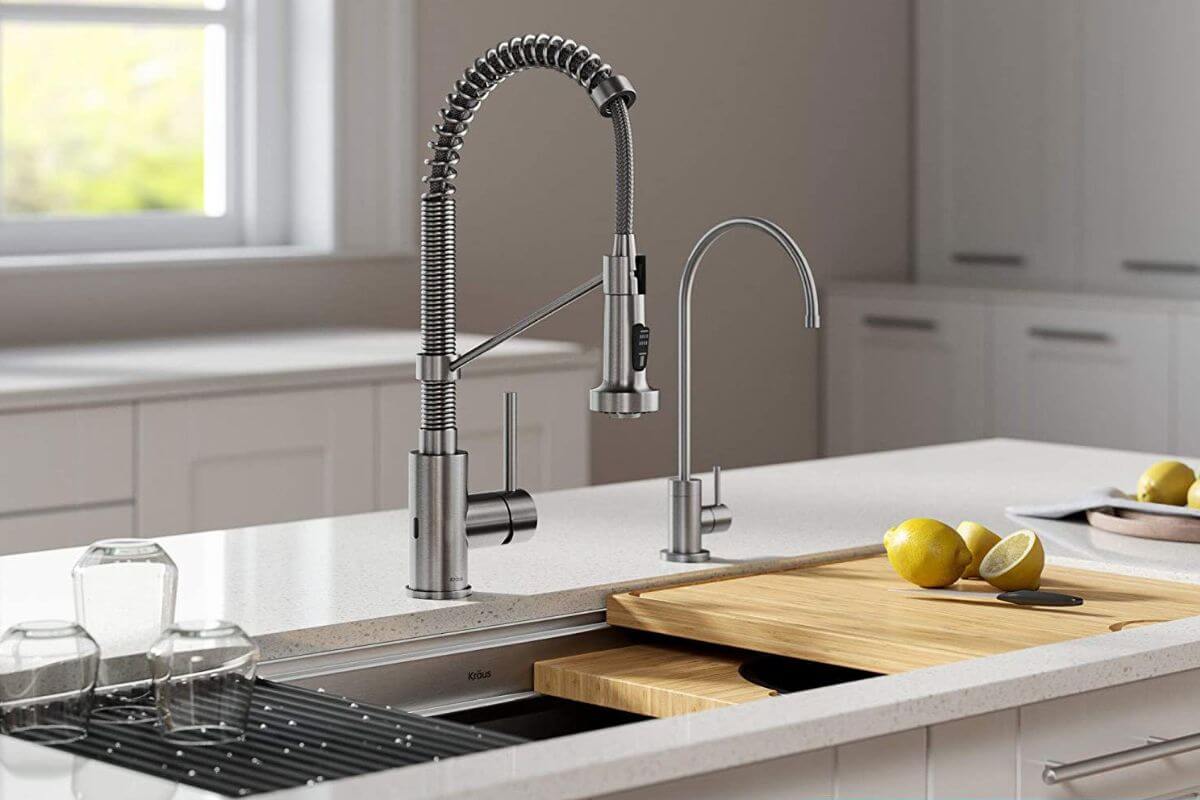In the world of kitchen upgrades, the faucet might not be the first thing that comes to mind, but it’s an essential component that can make a big difference in your daily routine. Traditional faucets have been around for ages, but modern technology has introduced touch and touchless options. In this article, we’ll explore the differences between touch and touchless kitchen faucets, helping you decide which one suits your needs and preferences.
The Traditional Touch Faucet
Design and Operation Traditional touch faucets, also known as manual or standard faucets, are the faucets we’ve been using for decades. They are operated by lifting a handle or turning a knob to control the water flow and temperature. These faucets come in a variety of styles and finishes, making it easy to find one that matches your kitchen decor.

Pros of Touch Faucets
- Familiarity: Most people are accustomed to using traditional faucets, which makes the transition seamless.
- Price: Manual faucets are often more budget-friendly than their touchless counterparts.
- Design Options: You can find a wide range of designs, from classic to modern, to complement your kitchen’s aesthetics.
Cons of Touch Faucets
- Hygiene Concerns: Touch faucets can be less hygienic since you touch the handle, potentially spreading germs.
- Inconvenience: If your hands are dirty or occupied, operating a touch faucet can be challenging.
The Modern Touchless Faucet
Design and Operation Touchless kitchen faucets are a product of modern technology. They are equipped with sensors that detect the presence of your hand or an object under the spout. These sensors activate the water flow, and in many models, you can adjust the water temperature and flow rate. Touchless faucets often have a sleek and contemporary design.
Pros of Touchless Faucets
- Hygiene: Touchless faucets reduce the spread of germs, as you don’t need to touch the handle with dirty hands.
- Convenience: The sensor technology allows for hands-free operation, making tasks like washing dishes or filling pots easier.
- Water Conservation: Many touchless faucets have features like automatic shut-off, helping to conserve water.
Cons of Touchless Faucets
- Initial Cost: Touchless faucets are typically more expensive than traditional ones due to the advanced technology.
- Maintenance: Sensors may require occasional cleaning to maintain their functionality.
- Power Source: Touchless faucets usually need a power source, either batteries or an electrical connection.
Which One Should You Choose?
The decision between a touch and touchless kitchen faucet depends on your personal preferences and priorities:
- Hygiene: If you prioritize hygiene and convenience, a touchless faucet is an excellent choice. It minimizes the risk of contamination and makes kitchen tasks more effortless.
- Budget: If you’re on a tight budget, a traditional touch faucet might be more appealing. They come in various price ranges and offer a wide selection of designs.
- Tech Enthusiast: If you embrace technology in your kitchen, a touchless faucet can be a fascinating addition. The sensor-driven operation adds a futuristic touch to your space.
- Water Conservation: If you’re environmentally conscious and want to reduce water wastage, consider a touchless faucet with water-saving features.
In conclusion, both touch and touchless kitchen faucets have their advantages and drawbacks. Your choice ultimately depends on your individual preferences, budget, and how you envision your kitchen’s functionality. Whether you opt for the familiarity of a touch faucet or the modern convenience of a touchless one, upgrading your kitchen faucet can significantly enhance your daily culinary experience.
FAQs
Are touchless kitchen faucets reliable?
Touchless kitchen faucets are generally reliable. However, like any electronic device, they can occasionally experience issues. Regular maintenance and battery replacement (if applicable) can help ensure their reliability.
Do touchless faucets need electricity to operate?
Yes, most touchless faucets require a power source, either batteries or an electrical connection. Battery-operated models are common and usually last for an extended period before requiring replacement.
Can I switch between touch and touchless modes in a touchless faucet?
Some touchless faucets offer the option to use them as traditional touch faucets when needed. Check the specific product details to see if this feature is available.
Are touchless faucets more water-efficient than touch faucets?
Touchless faucets often have water-saving features, such as automatic shut-off and flow rate adjustments, making them more water-efficient than traditional touch faucets.
How do I clean and maintain a touchless faucet’s sensors?
To maintain a touchless faucet’s functionality, you should clean the sensors regularly with a soft, damp cloth. Avoid abrasive or chemical cleaners, as they can damage the sensor. Follow the manufacturer’s cleaning instructions for the best results.
Can I install a touchless faucet myself, or do I need a professional plumber?
The ease of installation depends on your plumbing skills and the specific faucet model. Some touchless faucets come with straightforward DIY instructions, while others may require professional installation. If you’re unsure, it’s best to consult a plumber.
Are touchless faucets compatible with all sink types?
Touchless faucets are compatible with most sink types, but it’s essential to check the faucet’s specifications to ensure it matches the configuration of your sink.
Do touchless faucets come with a warranty?
Many touchless faucets come with warranties that cover defects in materials and workmanship. The duration and coverage of the warranty can vary by manufacturer and model, so it’s advisable to review the warranty information before making a purchase.
Are touchless faucets susceptible to false activations from nearby objects?
Touchless faucets are designed to detect the presence of hands or objects within a specific range. While they may occasionally activate due to nearby movements or reflections, most are engineered to minimize false activations.
Can I retrofit my existing kitchen faucet to make it touchless?
Some companies offer retrofit kits that can convert traditional faucets into touchless ones. However, the compatibility of such kits may vary, so it’s essential to ensure that your faucet is compatible before attempting a retrofit.
In summary, touch and touchless kitchen faucets have become popular options for homeowners, each with its own set of advantages and considerations. Your choice should align with your preferences, budget, and specific needs, ensuring that your faucet selection enhances your kitchen experience.



